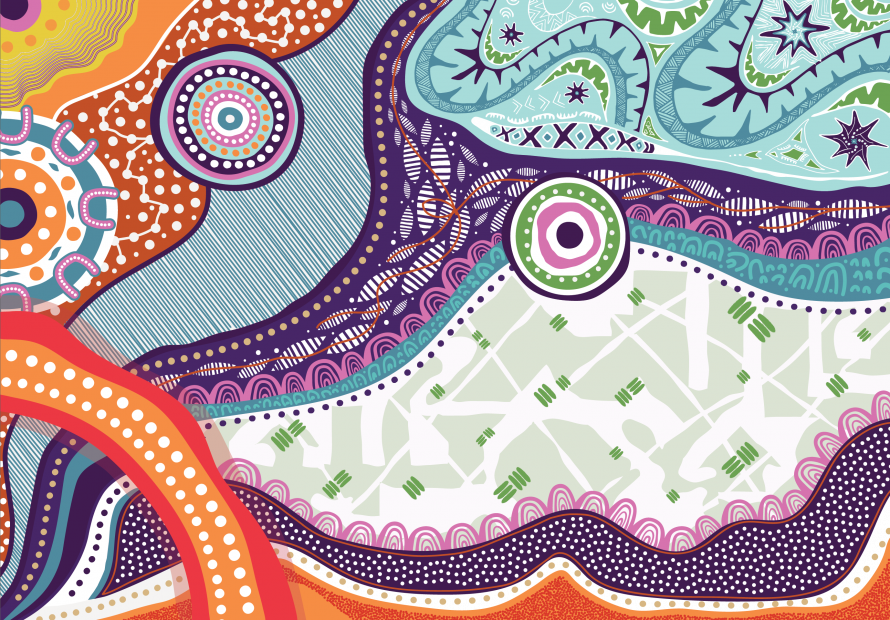Our First Nations artwork
Embodied design created by First Nations design agency Iscariot Media.
Building on the foundations laid down by the first Aboriginal and Torres Strait Islander Housing Action Plan 2019-2023, this design moves to an aerial view bringing more depth and perspective to the next phase of action. This design maps the landscape both physically and conceptually demonstrating the paths forward for communities in Queensland. Through various symbols this design is inspired by the diverse physical environments of our communities, from densely populated urban environments to smaller remote settings where communities gather.
From the Torres Strait Islands to the North, the Eastern Coastal regions, the Western communities and the built-up areas of Southeast Queensland, themes of connection, strength, movement and communication thread across the whole design and become the link between all communities.
When we come together to create a stronger and more vibrant environment for our communities, we not only improve the wellbeing of all Queenslanders, but we also inspire positive change that can have far-reaching implications for generations to come.
